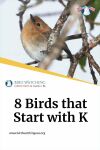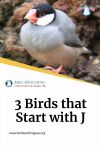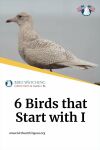
What’s This Post About?
Whenever we observe an owl, it is usually amidst dense vegetation in the darkness staring at us with its yellow beady eyes. This is because most of us think of owls as nighttime birds. However, this is only partially true. Contrary to popular belief, some owls hunt in the daytime also.
For nocturnal owls, birdwatchers frequently question where they go during the day. Resting and napping during the hours most wildlife is active must be complex and require well-concealed spots.
While some owls hunt during the daytime, most of them nap and recuperate after a long night of foraging. Then, they return to their roost or sleeping area. As sighting an owl during the day is peculiar, its implications range from an imbalance in life to a possible awakening or just uncertainty.

Where Are Owls During the Day?
Finding owls during the day depends on whether the owl is nocturnal or diurnal. If the owl is diurnal, you will be able to spot it as they are out for hunting. However, if the owl is nocturnal, they must be asleep in their resting places that are well-hidden.

DID YOU KNOW?
An owl’s resting place is called a roost.
Owls require lush trees with strong trunks when seeking cover. The nocturnal owls like these trees because they are sheltered during the day. This is a time when most of the animals are awake and looking for food.
Protection is essential, so nesting boxes are a good substitute if they can’t find a decent tree to sleep in.
The location of an owl’s roost varies depending on the species. Some owls will rest on branches of a tree within the proximity of their feeding grounds, allowing them to hunt immediately after leaving the roost. Barn owls, for example, have been seen roosting in a variety of rural structures and tree troughs.
Several types of owls can be found roosting in city centers. They are attracted to the city because of the numerous food options available.
Rats, sparrows, and other tiny animals are among the prey they can catch. They enjoy roosting in the large, old trees that border the communities’ gardens and roads. Owls have frequently been seen nesting on lamp posts and power lines.
Do not, for a moment, believe that these owls are resting or inactive throughout the day. On the contrary, even when they are sleeping, they are constantly on the lookout for hazards around them. When they detect movement, they open their eyes, turn their heads, and take flight.
How Do Owls Roost?

Now that you know that owls roost during the day, the next question that arises is, how?
Owls are solitary birds that are mostly found alone. However, they may be found roosting with other owls if they are looking for a mate, for warmth, inform others about favorable hunting areas, and keep an eye out for predators.
How To Locate An Owl During The Day?
While being in the right spot at the right time may play a role in your owl sighting spree, there's more to it than that. Time, dedication, and an attitude are essential factors for successful owling.
You would think that since owls find such concealed spots for roosting purposes, it must be impossible to spot them. While this is true and seeing an owl during the day is a rare occurrence, certain tells can indicate the presence of an owl nearby.
PRO-TIP
Ensure that you do everything quietly with minimum motion. Once the owl feels safe, then you can move closer. If the owl fidgets, move back without any sudden movement.

It is critical to be well-versed in your domain. Before you start looking for owls, there is certain information that you should be equipped with:
1. Owl Species
Learn about the several types of owls found near where you live or will be going. The most straightforward place to begin is with a bird list, found in most parks, recreation areas, and wildlife centers.
This usually includes a list of each bird, its favored location, and, most significantly, its seasonal status (common, uncommon, or rare).
2. Owl Sounds
Since owls are frequently detected simply by their cries, professional owlers must learn to identify the numerous owl calls. This work is now possible thanks to the abundance of recordings and CDs present. Thus, you can quickly examine the various sounds and store them in your memory.
3. Understand Their Needs
Understanding owls’ basic needs, such as decent daytime coverage near-ideal nighttime foraging areas, is the key to finding them. Owls will not opt to live in a deep daytime cover near a potential hunting ground.

WARNING!
Do not break branches to get an unobstructed view of the owl. They chose the site because of its natural camouflage, and ruining it will cause the owl to fly.
First, look for the mentioned foraging regions where owl prey can be found. Owls feed on rats, small animals, and insects like silk moths. These will be found in abundance in open areas and farming settings, especially overgrown bushes.
Other ideal habitats include salt marshes and freshwater marshes, rich in rodents like meadow voles, which attract owls. Coastal dunes and beaches may appear barren during the day, but they can host a swarm of rats and mice at night.
4. Clues That Indicate Owl Presence
We have already established that owls find places to rest during the daytime that they can camouflage into. Therefore, you should know specific clues to locate the owl quickly.
The collection of pellets on the ground just under the roosting place is one hint to an owl’s location. Since most owls devour their food whole, the unprocessed portions (bones, bill, teeth, skull, feathers, or hair) are compacted into a pellet and thrown back.
Every year, they shed their plumage and regrow another set, just like all other birds. So keep an eye out for giant feather piles on the ground and have a guidebook accessible to identify what you’ve found.
PRO-TIP
The number of pellets can be used to estimate how long an owl has been living there. Owls typically throw back two pellets per day.
Owls excrete a thick, chalky white liquid that is an unambiguous clue to daytime owlers. The liquid is known as the whitewash of an owl; it ultimately builds up and pours down through the branches below the owl’s perch resembling white candle wax.
If you can spot this, you will undoubtedly find an owl hidden in that tree.

Are All Owls Nocturnal?
Owls will not only be found resting amidst dense vegetation. Some owls will also be seen hunting during the day due to their different sleep patterns.
The vast majority of owl populations are nocturnal. However, this does not apply to all owls, as some capture and eat their prey during the day. Snowy owls, for instance, hunt throughout the day because they live in regions with extended hours of sunlight, while Barred owls forage at dawn and twilight.
Based on their sleeping habits, there are three categories of owls:
- Owls that hunt at night are known as nocturnal owls
- Owls that are active throughout the day are known as diurnal owls.
- Crepuscular owls are owls that hunt day and night.
The most well-known are nocturnal owls. They are the ones who are the most active at night. They forage at night and carry out all of their regular routines. They can be found sleeping on a limb somewhere, resting throughout the day.
DID YOU KNOW?
69 percent of owls are nocturnal, 22 percent are crepuscular, and only 3 percent are diurnal. Based on this knowledge, owls are still classified as nocturnal animals.
According to the experts, the explanation for these different sleep cycles is primarily due to prey availability. The northern pygmy owl, for example, has a preference for songbirds, which are also active throughout the day.
Diurnal Owls
Diurnal owls are the absolute opposite. During the day, they are active owls that are on the lookout for prey. They, like other animals, rest and replenish their batteries at night. While the majority of owls are still nocturnal, two species are diurnal.

Northern hawk owls live in the far northwestern parts of North America and Asia. They are capable of hunting in the same way that hawks and falcons are. They’re persistent hunters sitting high in the treetops, waiting to pounce on their victim. In the winter, they can hunt for creatures that are concealed behind the snow.
Northern Pygmy Owls are more prevalent on the west coast of North America. They are most visible during the day when the sky is cloudy. They can be spotted hanging around on treetops swaying their heads and swinging their tails. They, like hawks and falcons, have hunting abilities.
Crepuscular Owls
Crepuscular owls spend most of their time awake between twilight and morning. However, they forage at all hours of the day and night. Examples are Snowy owls, Short-eared owls, Burrowing owls, and Great horned owls.
How To Tell If an Owl Is Nocturnal or Diurnal?
The owls you see during the day can be diurnal or nocturnal. Even the nocturnal birds are conscious of their surroundings and may wake up and change their spot when disturbed. A common approach to finding out what kind of owl it is, you can look at the color of their eyes.
Dark-eyed owls are nocturnal. They love to hunt at night and are capable of catching their prey in absolute darkness. Their eyes do not aid in detecting their target, but they are camouflaged in the dark. Thus if you happen to see a dark-eyed owl during the day, know that it is a nocturnal bird, and this sighting is rare. The examples include barn owls and barred owls.
Crepuscular owls have orange eyes. These are twilight owls that prefer to seek their prey in the early morning light. Birds that hunt during the day have yellow eyes.
They have excellent eyesight but depend on their hearing to find prey underneath the snow. As a result, they are among the most robust of the owl species. An example of diurnal owls is snowy owls.
What Does Seeing an Owl Mean (Day or Night)?
Several people believe that sighting an owl during daytime has significant meaning and may even be a signal from the universe.

Since owls are such secretive creatures, whether nocturnal or diurnal, seeing one is nearly always momentous.
Owls are fascinating and secretive predators recognized for their stunning beauty as well as their deadly strength. It could be due to their nightly activities or the fact that they appear to view everything from the shadows, but there is no doubting that the owl has a more significant impact than most other species.
Most of the time, you’ll be lucky if you catch a glimpse of one of these strange critters hunting at night, but seeing an owl during the day is most peculiar. It can be possible that you’ve come across a diurnal owl. Seeing one of them, on the other hand, is still a rare occurrence.
A strange observation, such as a nocturnal animal out during the day, is thought to be of greater interest. These shocking occurrences in one’s life are frequently viewed as a signal from the cosmos that something is at play.
Indication of Imbalance
When an owl is seen in broad daylight, one interpretation is that it is a sign of disequilibrium. It could indicate that you are utterly out of sync yourself or that your life is about to become so. The appearance of an owl in broad daylight is diametrically opposed, suggesting that something isn’t quite right.
Some may interpret this as a forewarning that something significant is about to occur that will alter the entire nature of your existence. This is because seeing a generally perceived nighttime bird during the day is an anomaly. Fortunately, the alteration may be beneficial rather than harmful.
Symbol of Enlightenment
Another way to think of an owl in broad daylight is as a sign of awakening. The owl is primarily active at night. When you see one during the day, it’s a sign that you are about to discover something new, fresh, and out of the box.
The owl typically only observes things at night, but being awake shows how it is also watching during the day. This could indicate that you are about to experience a fresh understanding that will alter your perception of the world.
Sign of Mystery
During the day, owls are nearly never seen outside, and since they are covert and silent predators, sighting one is rare in any situation. Therefore, their reason to be awake and out is no less than a mystery because they are expected to be resting in some well-hidden spot.
These enigmatic creatures are frequently thought to know more than they reveal. As they watch over the forest at night, owls are often shrouded in mysteriousness. Seeing one during the day could indicate that you are about to stumble into a mystery or unaware of your involvement in one.
Sign of Doubt and Unease
Seeing an owl during the day could indicate that you are not in the right place. This owl lost and out of its natural habitat could be a sign that you’re feeling down.
Examining the status of your lifestyle and how you feel about it can be a reliable indicator. This could be in the context of a job, a relationship, or even a change of attitude.
Seeing An Owl During the Daytime in A Dream

Our dreams can have secret connotations that our conscious minds may miss, which is why our minds count on dreams to communicate small signals. Therefore, when analyzing dreams, it’s vital to think about the aspects of the dream and then come up with an analysis based on the two.
In the context of dream analysis, daylight is frequently regarded as a sense of normalcy. This isn’t always the case, though. Daylight can also be interpreted as a metaphor for a need for a harsh awakening.
Some people believe that a daytime environment, especially when combined with other startling dream aspects, indicates missing something. Consider this a sign that you’re not gazing at something in the sunlight but rather in the shadows. But, on the other hand, it could just be a signal to open your eyes.
Seeing an owl in broad daylight may indicate that you have something to discover or that knowledge is on its way. It could show that you are becoming more aware of the world and are finally recognizing it for what it is.
Alternatively, it could just mean that your mind wants you to broaden your thoughts and view the world for what it is instead of avoiding the unpleasant components.

Keep Reading!
Most owls are nocturnal, which means they hunt during the night and rest during the day. You will find these birds hidden within trees and bushes catching up on their sleep.
Other owls are diurnal or that hunt during day and night both. These owls can be found hunting or foraging for prey during daytime hours.
Since the majority of the owls are nocturnal, seeing them during the daytime is a rarity. This has several implications and can signal doubt, unease, awakening, mystery, or the arrival of something new or different.
For a thorough understanding and learning of owls, head over to this post to learn whether owls are smart or not.
Are Owls Smart? Are They the Smartest Animals in The World?
Have you heard about the phrase 'as wise as an owl?’ Read ahead to find out how smart owls are.

By David A. Swanson
Bird Watching USA
My name is David and I'm the the founder of Bird Watching USA! I started Bird Watching with My father-in-law many years ago, and I've become an addict to watching these beautiful creatures. I've learnt so much over about bird watching over the years that I want to share with the world everything I know about them!

David A. Swanson
Bird Watching USA
My name is David and I'm the the founder of Bird Watching USA! I started Bird Watching with My father-in-law many years ago, and I've become an addict to watching these beautiful creatures. I've learnt so much over about bird watching over the years that I want to share with the world everything I know about them!









